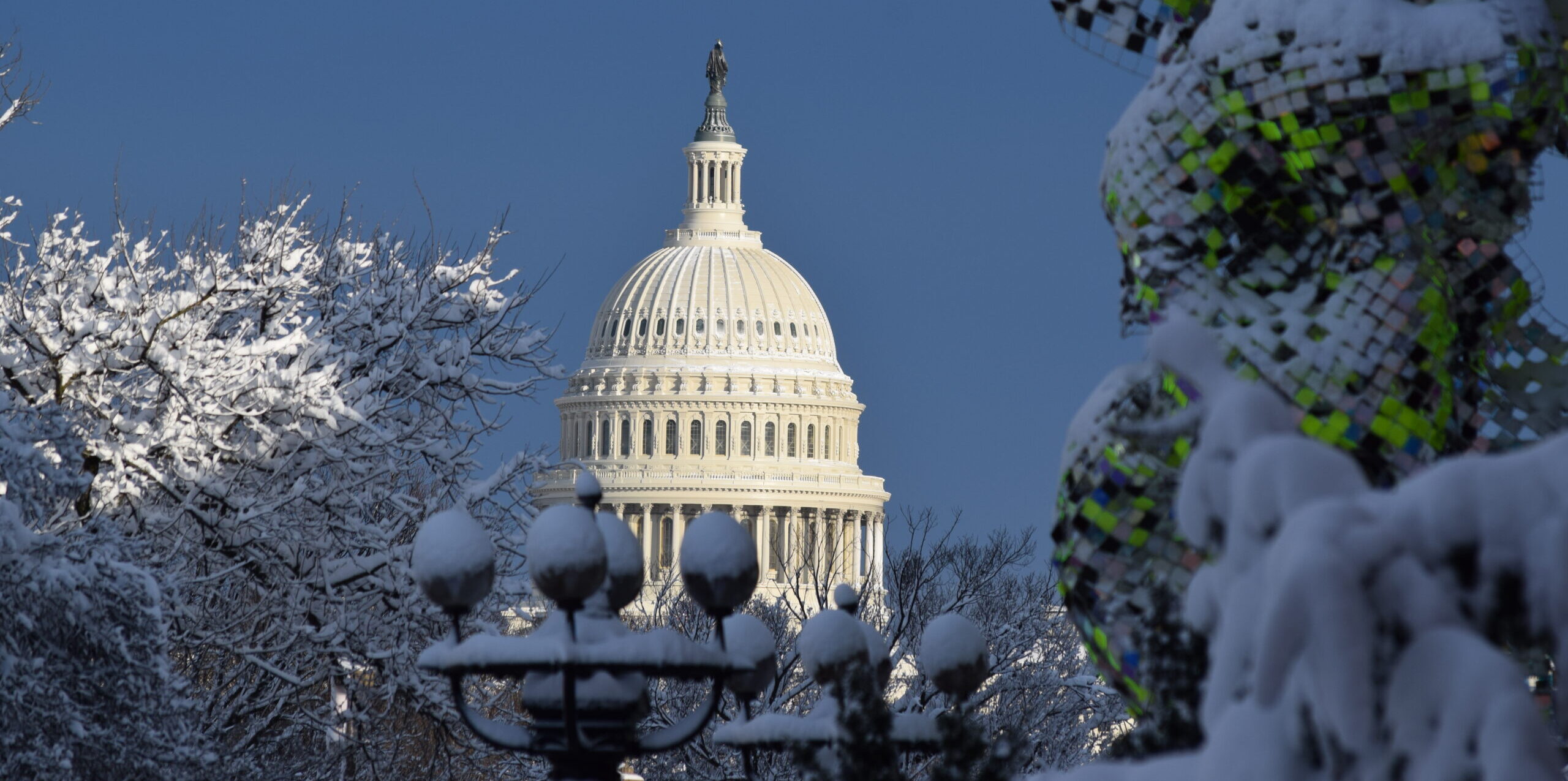American artist Allyn Cox (1896-1982) designed three corridors of murals for the House of Representatives wing of the United States Capitol in the 1970s and 1980s. Cox and his associates painted the first two corridors, the Hall of Capitols and the Great Experiment Hall, between 1973 and 1982. Cox died soon after the completion of the Great Experiment Hall murals. In 1993-94, EverGreene Painting Studios executed the final corridor of murals depicting the nation’s Westward Expansion.
The United States Capitol Historical Society funded the painting of the Cox Corridors. The National Society Daughters of the American Revolution contributed the funds to pay for the Great Experiment Hall to commemorate the Bicentennial of the American Revolution. Both organizations cooperated in the publication of The American Story in Art: The Murals of Allyn Cox in the U.S. Capitol in 1986.
Allyn Cox Biography:
ALLYN COX WAS EMINENTLY QUALIFIED for his work in the U.S. Capitol. Born in 1896, he was the son of two accomplished artists, Kenyon and Louise Howland King Cox. Trained in the United States and in Italy, Cox steadily built his reputation as a muralist over many years. He was originally called to the Capitol in 1953 to complete the series of paintings on the Rotunda frieze begun by Constantino Brumidi, the 19th-century artist who labored for a quarter-century beautifying the halls of government. The 32-foot section painted by Cox depicts scenes of the Civil War, the Spanish-American War, and the birth of aviation at Kitty Hawk, North Carolina. Cox later painted a portrait of Henry Clay in the Senate Reception Room and recorded man’s 4 ” 1969landing on the moon in a mural in the Brumidi Corridor on the ground floor of the Senate wing.
Planning for the House wing murals began in the winter of 1969-70. The immediate challenge Cox faced was to design a series of compositions that would fit the varied shapes and spaces of the House wing corridors. It was decided to concentrate the murals on the corridors’ vaulted ceilings, out of the way of the crowds that pass through these busy ground-floor hallways.
The artist first completed scale drawings of the proposed murals, making sure his designs harmonized with the architecture of Thomas U. Walter, designer of the House and Senate wings. Cox also made certain the murals would be historically accurate. He was aided by the staffs of the U. S. Capitol Historical Society, the Art and Reference Division of the Office of the Architect of the Capitol, the Library of Congress, the New York Historical Society, the Avery Library at Columbia University, the New York Public Library, and many local historical associations.
After his plans were approved, Cox began work in February 1973 in the north-south corridor leading to the House Restaurant, on the east side of the House wing. This first phase of work, funded by the U.S. Capitol Historical Society, is known as the Hall of Capitols. Among its subjects it includes paintings of all the buildings that have housed the U.S. Congress and its predecessors. At this stage of the project, Cox was joined by Clifford Young, an experienced muralist who helped work up the cartoons, or preparatory drawings, of the paintings. John Charles Roach also joined the staff. He would help paint many of the corridor’s trompe l’oeil ornaments, classical decorations done in simulated relief.
After scaffolding was erected in the hallway, the plaster panels that would contain the murals were carefully repaired. Canvas was then glued atop the plaster and a coat of white paint was applied as a base. Full-scale cartoons were transferred to the panels by “pouncing,” applying powdered charcoal through perforated tracings of the drawings. This was followed by the actual painting, done in oil colors.
The first series of Cox murals was completed in July 1974. Two years later, as their contribution to the Bicentennial celebration, the Daughters of the American Revolution funded a second series of paintings, featuring 16 murals depicting the political, legislative, intellectual, and economic growth of the nation. These murals are in the central east-west corridor of the House wing, called Great Experiment Hall.
Cox and his associates completed this portion of the project in 1982, and it was dedicated in September of that year. Not long afterward, Allyn Cox died, but not before he had received a fitting tribute. On September 21, both houses of Congress honored him with a special recognition ceremony in Statuary Hall. Today, the work begun by this fine artist goes on. Plans and sketches have been completed for a third series of murals in the western north-south corridor of the House wing, and a possible fourth and final series of murals is being considered.


